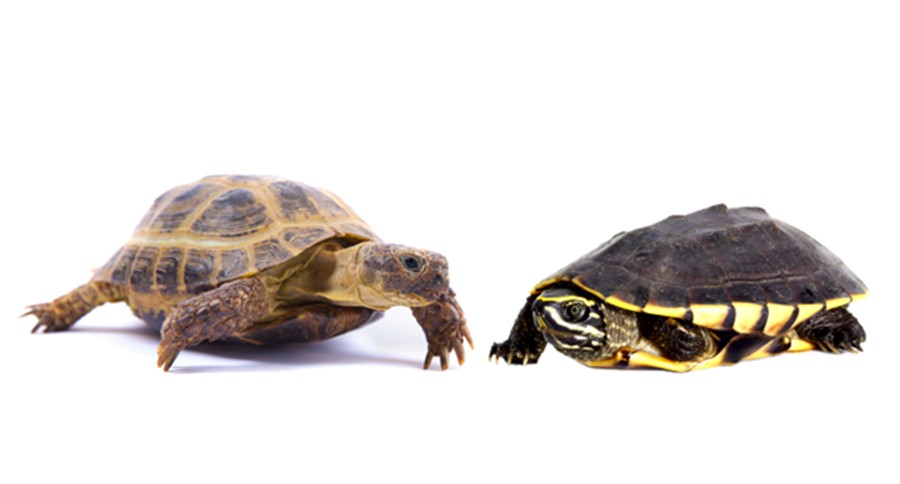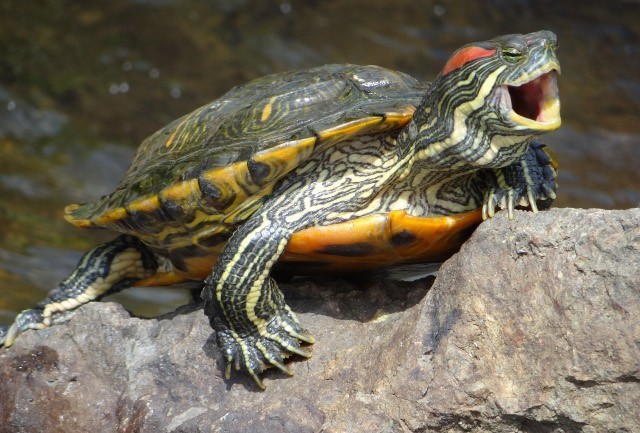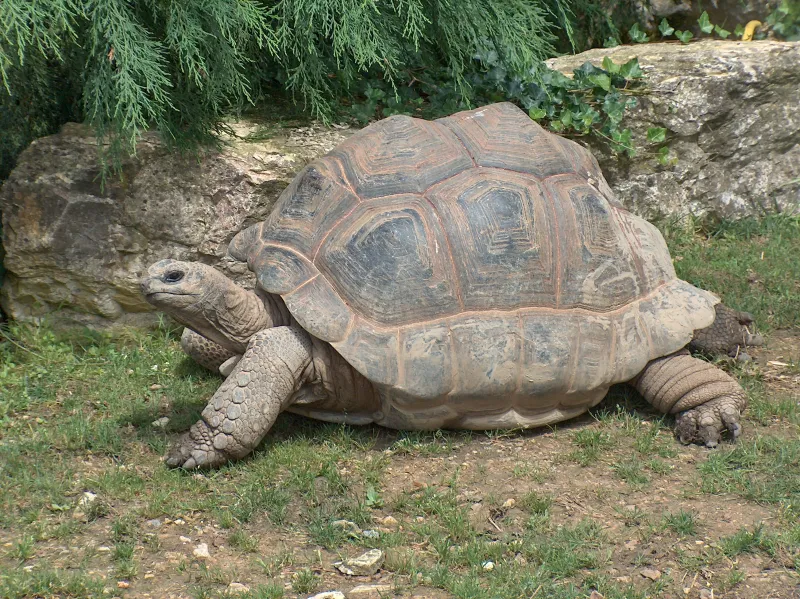A tortoise is a turtle but a turtle is not necessarily a tortoise.
The tongue twister of the relationship between turtles and tortoises is the same as those two boxy geometric shapes we learned in elementary school. A tortoise is a turtle just like a rectangle is a square, but a turtle is not a tortoise just like a square is not a rectangle.
The turtle vs tortoise debate is a complicated one. Both species lay eggs, and many are herbivores while others are omnivores. To the untrained eye, turtles and tortoises may look exactly alike, but there are a number of ways to differentiate between them. Looking for physical characteristics, like long claws, sturdy feet, and shell shape can help you to tell if you're looking at a pet turtle or a tortoise.
All Turtles Aren't Tortoises
"Turtle" is a broad term that can refer to any reptile with a shell. However, the classification can be further broken down into types of turtles. Confusingly, a turtle is a type of turtle. Tortoises and terrapins are the other two kinds of turtles.
But All Tortoises Are Turtles
If you look at the larger picture, all turtles are reptiles with a shell, and therefore all tortoises are turtles—in the broadest sense of the word. However, in the smaller scope of things, when you divide the larger category into three different types, you see that a turtle is not necessarily a tortoise or even a turtle, because it can be a terrapin instead.
Are you confused yet?
Distinguishing Characteristics
Let's leave our vocabulary lesson behind for now and dive right into the science of things. In order to have divisions of these reptiles, they have to have different characteristics.
Distinguishing attributes of the feet, shell and habitat help to tell these reptiles apart. The most obvious distinction is where they live. Tortoises live on land. Turtles can live in water or land, with some species being almost solely aquatic while others are semi-aquatic.
As terrestrial individuals, tortoises adapted flat feet to more easily traverse the landscape. For life in the water, turtles have at least some degree of webbing between their toes—even full-fledged flippers in the most aquatic individuals.
Box turtles spend a lot of time on land and so are often mistaken for tortoises. But, these land dwellers have slightly webbed feet, making them turtles!
Let's look at the diamondback terrapin. According to the National Aquarium, this turtle (yes, we're talking true turtle here), live in United States salt marshes along the coasts running from Massachusetts to Texas. Because this turtle lives in an aquatic environment, it has strong webbed feet and diamond-shaped grooves on its carapace, or top shell. Unlike land turtles, which have flatter feet, this turtle is better equipped for swimming. These wild turtles are strong swimmers since they have to navigate daily tides and strong currents.
The Role of Shell Shape
The last difference between turtles and tortoises is shell shape. Shells differ between different species of turtles. Because aquatic turtles spend time in the water, a turtle shell is flatter for streamlined swimming. A tortoise has more of a dome shape to its shell. As land-dwelling box turtles spend most of their life out of the water, their shells look more like an Aldabra tortoise than a red-eared slider.
To clarify things even further, the tortoiseshell pattern seen on sunglasses is not actually made from tortoises. It was made from turtles—the hawksbill sea turtle, specifically. Nowadays, the species is protected and so that material is just plastic.
The shape of a turtle's body with regard to its feet and shell can offer us a better understanding of its habitat. It also helps you classify if it is indeed a turtle or a tortoise! Whether you're looking at an alligator snapping turtle, a leatherback, a Galapagos tortoise, or a green sea turtle, by evaluating the animal's shape and physical characteristics, you'll be able to classify them without relying on their names.
Er, well, they are all technically turtles...






